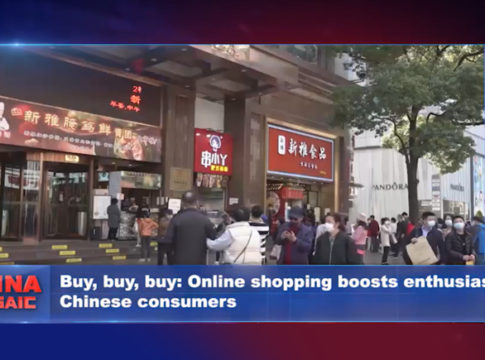A news report by China.org.cn on China’s recent shopping festival and livestreaming promotions:
As the COVID-19 outbreak has gradually been brought under control in China, many Chinese people have re-opened their wallets since the second quarter, spurred on by various promotional activities, including spending subsidies provided by the enterprises themselves.
Recently, the Shanghai government launched the “May 5th Shopping Festival,” a new large-scale campaign aimed at boosting consumption. The city’s major shopping districts and streets, commercial enterprises, and brand stores have launched digital marketing promotions, covering products such as food items costing a few dozen yuan to cosmetics priced in the thousands. Even cars that normally retail for several hundred thousand yuan are being discounted up to 45%. The shopping festival will run through key holidays in the second quarter, with special promotions being held every day.
As China resumes full-scale work and production, holding shopping festivals with various promotions and a wide range of discounted products will undoubtedly have a significant effect.
Over the past few months, consumer spending in China–one of the world’s biggest consumer markets–dropped due to the COVID-19 outbreak. However, on the very evening that the “May 5th Shopping Festival” launched, netizens across the country snapped up discounted goods, and some time-honored brands quickly sold out of certain products. Twenty-four hours after the Festival was launched, the gross merchandise value in the Shanghai area has exceeded 15.68 billion yuan ($2.21 billion), showing that China’s huge consumption potential is about to be unlocked again.
As part of the shopping festival, e-commerce platforms and businesses attracted consumers by jointly handing out coupons and providing spending subsidies. Besides, via the online-to-offline mechanism, people can get fresh food delivered straight to their home and even dishes from Michelin-starred restaurants directly to their tables. The integration, as a highlight of the shopping festival, is supported by the development of mobile e-commerce in China and the rapid growth of many other emerging forms of consumption.
For example, during the coronavirus outbreak, livestreaming has fast become a popular sales method in China. Live streamers have been selling real estate and travel packages, with one even auctioning a rocket launching service. It seems that there’s nothing that can’t be sold via livestream. Several platforms have also set up dedicated charity livestreams selling specialty products from Hubei, the province that suffered most from the epidemic, with many county chiefs in the province also participating to help promote and sell local products.
Data shows that online retail sales of physical goods in China increased by 5.9% in the first quarter compared with the previous year. This shows that the integration and interaction of online and offline retail is not only a highlight of the shopping festival, but also an important model for China to drive future consumption.
Various shopping festivals and booming livestream sales reflect the current recovery in China’s industrial chains, markets and social environment. As the country emerges from the shadow of the coronavirus, China’s economic and social engine is turning back on in new ways.





